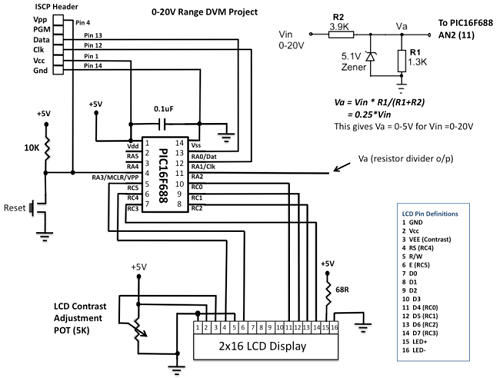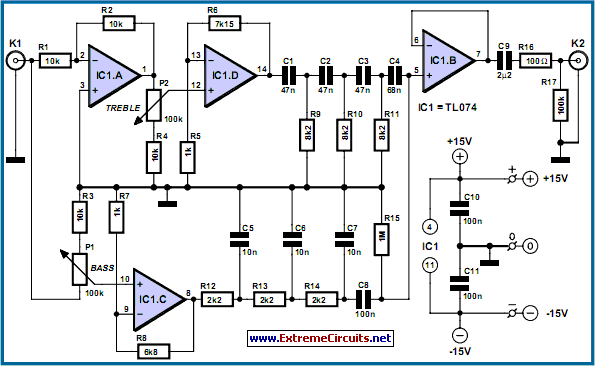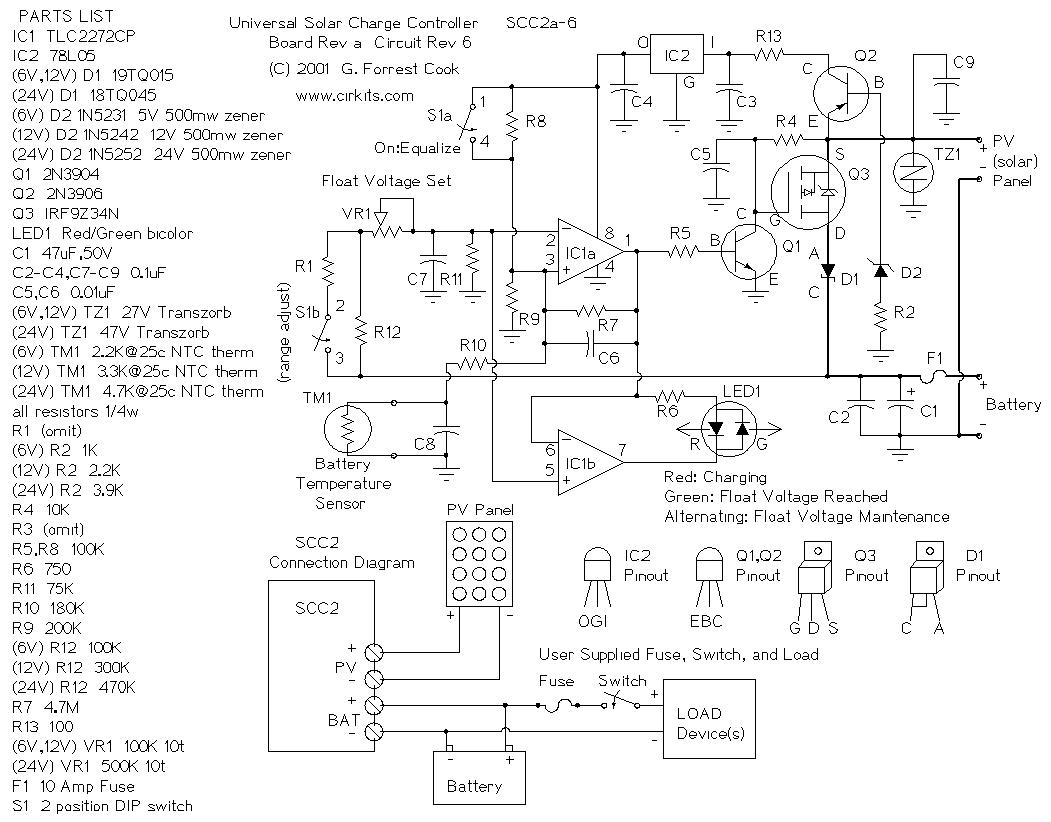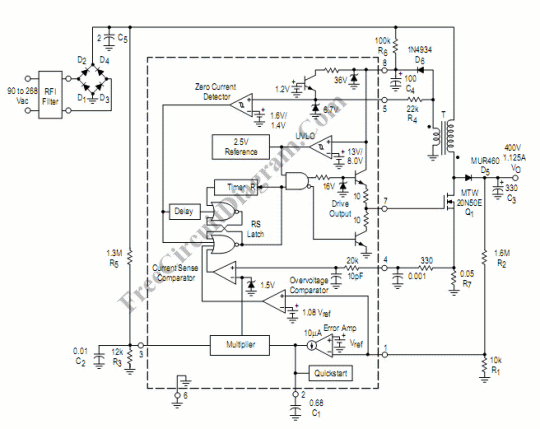
KD-1001 produced by lantern controller
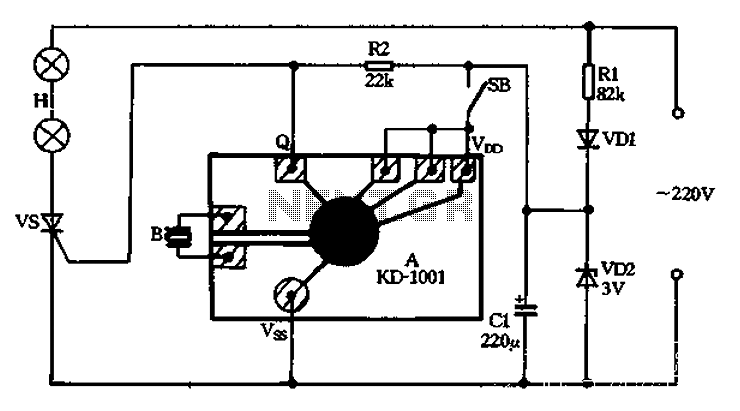
A 220V AC power supply is utilized through a resistor R1 to step down the voltage, followed by a rectifier VD1 and a filter capacitor C1, resulting in an output voltage of approximately 3V DC for the KD-1001 manifold. The trigger terminal of the manifold is connected to the positive terminal of the power source to produce a continuous sound and light output. When the switch SB is turned off, the manifold ceases operation, while the power supply through resistor R2 provides a gate trigger current to the SCR (Silicon Controlled Rectifier), allowing it to turn on and power the lantern. If the switch SB is turned on, the KD-1001 music manifold operates, and the output terminal Q modulates the negative side with a rhythmic pulse that controls the gate current of the SCR, resulting in a flashing light effect. This configuration allows for the selection of two lighting states, either steady or flashing, via switch SB. In the blinking state, connecting an audio output from a piezoelectric ceramic sheet B generates pleasant electronic music sounds.
The circuit operates with a primary input of 220V AC, which is reduced by the resistor R1 to ensure safe operation of the downstream components. The rectification process is performed by the diode VD1, converting the AC voltage to DC. The capacitor C1 smooths the rectified voltage, providing a stable 3V DC output suitable for powering the KD-1001 manifold.
The manifold's trigger mechanism is crucial for its operation. When the switch SB is in the off position, the circuit interrupts the power supply, stopping the manifold from functioning. However, the resistor R2 provides a small current to the gate of the SCR, allowing it to remain in a conductive state. When the switch is turned on, the KD-1001 activates, allowing the output terminal Q to pulse in a rhythmic manner, effectively controlling the SCR's gate current. This pulsing action creates a flashing effect in the connected lantern.
The design also incorporates an audio output feature. By connecting a piezoelectric ceramic sheet B to the system, the blinking state of the lights can synchronize with electronic music output, enhancing the visual and auditory experience. The overall configuration allows for versatile control over the lighting and sound output, making it suitable for various applications where both illumination and audio feedback are desired. The circuit's ability to toggle between steady and flashing states provides flexibility for different operational scenarios.220V AC power via a resistor Rl buck, VDI rectifier, VD2 and Cl filtered output voltage of about 3V DC voltage supply manifold KD-1001 electricity. Manifold trigger terminal co nnected to the positive terminal of the power source to form a continuous sound and light output. Energized after, when the switch is off SB, Manifold does not work, the power supply via a resistor R2 to vs SCR gate trigger current injection, vs opened, H powered lantern lit. If the switch is closed SB, music Manifold KD-IOOI power work, manifold Q output terminal on the negative side modulation pulse rhythmically pulling vs SCR gate current, resulting in time vs time off on, lights H flashes light.
So you can choose two lanterns lit with flashing light emitting state by the switch SB. When lights blinking state, connected to the audio output of the piezoelectric ceramic sheet B can issue a pleasant electronic music sound.
The circuit operates with a primary input of 220V AC, which is reduced by the resistor R1 to ensure safe operation of the downstream components. The rectification process is performed by the diode VD1, converting the AC voltage to DC. The capacitor C1 smooths the rectified voltage, providing a stable 3V DC output suitable for powering the KD-1001 manifold.
The manifold's trigger mechanism is crucial for its operation. When the switch SB is in the off position, the circuit interrupts the power supply, stopping the manifold from functioning. However, the resistor R2 provides a small current to the gate of the SCR, allowing it to remain in a conductive state. When the switch is turned on, the KD-1001 activates, allowing the output terminal Q to pulse in a rhythmic manner, effectively controlling the SCR's gate current. This pulsing action creates a flashing effect in the connected lantern.
The design also incorporates an audio output feature. By connecting a piezoelectric ceramic sheet B to the system, the blinking state of the lights can synchronize with electronic music output, enhancing the visual and auditory experience. The overall configuration allows for versatile control over the lighting and sound output, making it suitable for various applications where both illumination and audio feedback are desired. The circuit's ability to toggle between steady and flashing states provides flexibility for different operational scenarios.220V AC power via a resistor Rl buck, VDI rectifier, VD2 and Cl filtered output voltage of about 3V DC voltage supply manifold KD-1001 electricity. Manifold trigger terminal co nnected to the positive terminal of the power source to form a continuous sound and light output. Energized after, when the switch is off SB, Manifold does not work, the power supply via a resistor R2 to vs SCR gate trigger current injection, vs opened, H powered lantern lit. If the switch is closed SB, music Manifold KD-IOOI power work, manifold Q output terminal on the negative side modulation pulse rhythmically pulling vs SCR gate current, resulting in time vs time off on, lights H flashes light.
So you can choose two lanterns lit with flashing light emitting state by the switch SB. When lights blinking state, connected to the audio output of the piezoelectric ceramic sheet B can issue a pleasant electronic music sound.
